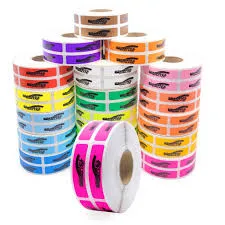The Evolution and Importance of Food Containers A Comprehensive Overview
Food containers are an essential aspect of our daily lives, serving not only practical purposes but also aligning with evolving consumer preferences and environmental considerations. From the early days of basic storage solutions to the modern, multifunctional designs available today, food containers have undergone significant transformation. This article explores the evolution, types, materials, and future trends of food containers, highlighting their importance in contemporary society.
Early Beginnings
Historically, food preservation has been crucial for survival. Ancient civilizations utilized materials at hand—such as clay pots, animal skins, and wooden boxes—to store food. These rudimentary containers protected food from pests and environmental factors, helping to extend its shelf life. Over time, as societies advanced, so too did the methods of food storage, with innovations such as glass jars introduced during the 19th century, revolutionizing the way people preserved food.
Types of Food Containers
Today, food containers come in a diverse range of types, each tailored for specific needs
1. Plastic Containers These are perhaps the most common food storage solutions. They are lightweight, durable, and come in various shapes and sizes. Many plastic containers are microwave-safe, making them convenient for reheating meals.
2. Glass Containers Increasingly popular for their health benefits, glass containers do not leach chemicals into food and can withstand higher temperatures. They are favored for meal prep and leftovers as they allow for easy visibility of contents.
3. Metal Containers Stainless steel and aluminum containers are excellent for both storage and portability. They are often used for on-the-go meals and outdoor activities, thanks to their durability and resistance to corrosion.
4. Reusable Bags These eco-friendly solutions are made from materials like silicone or cloth. They are especially popular for packing lunches, snacks, or bulk items from grocery stores.
food containers

5. Vacuum-Sealed Bags Utilizing air-tight technology, these bags are designed to prolong the freshness of food by minimizing oxidation. They are essential for sous-vide cooking and for those who buy in bulk.
Materials and Sustainability
With growing awareness of environmental issues, the materials used in food containers have become a significant consideration. Traditional plastic containers have faced criticism due to their contribution to plastic pollution. In response, manufacturers are increasingly producing containers from recycled materials, biodegradable substances, or sustainable options like glass and stainless steel.
Consumers are also drawn towards products that minimize waste, such as bulk containers or zero-waste alternatives. The trend of bring your own container at grocery stores and restaurants reinforces this shift, encouraging individuals to opt for sustainable packaging solutions and reduce their carbon footprint.
The Future of Food Containers
The future of food containers is likely to be shaped by technological advancements and changing consumer behaviors. Smart containers with integrated technologies that track freshness and optimize storage conditions could become commonplace. For instance, some innovative designs already include sensors to alert users when food is nearing its expiration date.
Additionally, as the demand for meal kits and ready-to-eat options grows, there is an increasing need for specialized containers that maintain food quality during delivery. This will likely lead to further innovations in packaging technology, ensuring that food stays fresh and safe while in transit.
Conclusion
Food containers represent much more than simple storage solutions—they reflect our lifestyles, values, and the ongoing push towards sustainability. With diverse options tailored to various needs, the best food containers can enhance our daily routines, whether it's meal prepping at home, packing lunch for work, or enjoying a picnic in the park. As we look to the future, it is crucial for consumers, manufacturers, and policymakers to collaborate and focus on sustainable practices that benefit both our health and the planet. By choosing the right food containers, we not only enhance our culinary experiences but also contribute to a more sustainable world.



